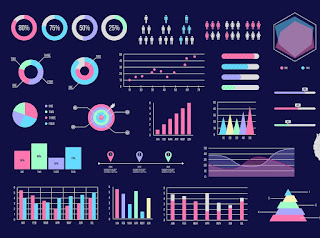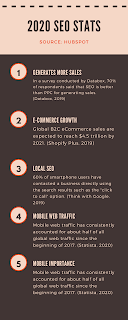V for Victory - The 3 V’s of Big Data Management
Turn up the Volume, increase the Velocity and let Variety be the spice of your life. These three V’s of Big Data: what are they and why should your small business care?
Last time we looked at what exactly Big Data means for your small business. Now it's time to discuss in detail three of the V's of Big Data management.
Think of the data that your business creates every day: the different types of information, the speed at which it’s coming in, the sheer amount of it all. If your business isn’t equipped to handle all this data, information overload could quickly become a serious issue.
Let’s talk about the Volume of Big Data first. In simple terms, Volume refers to the amount of information created, saved and used within any system used by your business.
The ability to handle large amounts of Data can be a critical factor in the decisions made by your business every day: the more useful Data you have about your product, service or customers, the more informed this allows you to be about these decisions. Choosing which types of products to sell or what specific market segments to target: these sorts of decisions get easier to make when you have an increased Volume of Data pointing to current trends in your area of business. As Data sizes increase, so to does the need for proper storage solutions. Think about how scaling your storage solutions could help your business: should traditional databases prove to be restrictive to your decision making, specialised software to process large Data sets such as Apache Hadoop could be worth investing in.
Next, let’s talk about the Velocity of Big Data. Here, we’re talking about the speed at which Data enters and is processed by your business.
Some businesses may require Data to be processed as soon as it’s created, before it even goes to be stored in a database. This real-time processing of Data is crucial in industries where decisions have to be made quickly, like financial trades or scientific calculations. Think of CERN, the laboratory in Switzerland where research using particle accelerators generates 25 gigabytes of information a second. This high-Velocity of Data has to be processed as quickly as possible. Services such as IBM Streams provide solutions for this sort of real-time Data processing. One instance of real-time processing working advantageously for a business was when Walmart were able to identify a stock problem when their sales analysts noticed a particularly popular cookie wasn’t selling well in two of their stores. Upon investigation, it transpired the cookies hadn’t actually been placed on the shelves yet.
Finally, there’s the topic of the Variety of Big Data.
Traditionally, Data would have been stored as text in the form of database files (think large spreadsheets in Excel). Nowadays, Data is created from many sources, both machine-generated and human-generated. File types like video, images or sensor data may not be easily transferred into a text database. This Variety of formats requires non-traditional forms of processing and storage. Understanding what types and formats of data you’ll be dealing with is crucial to ensuring your business is using the right tools for its Data processing needs.
Reference
Hadoop.apache.org. 2021. Apache Hadoop. [online] Available at: <http://hadoop.apache.org/> [Accessed 30 January 2021].
Ibm.com. 2021. IBM Streams - Overview. [online] Available at: <https://www.ibm.com/cloud/streaming-analytics> [Accessed 30 January 2021].
Marr, B., 2021. Really Big Data At Walmart: Real-Time Insights From Their 40+ Petabyte Data Cloud. [online] Forbes. Available at: <https://www.forbes.com/sites/bernardmarr/2017/01/23/really-big-data-at-walmart-real-time-insights-from-their-40-petabyte-data-cloud/?sh=1784d0cb6c10> [Accessed 30 January 2021].




It blows my mind the amount of data we generate every day as individuals. In my opinion, the challenge for small businesses with big data is not in the data itself. Still, it is in collect data that really make business sense for their particular business. Collecting vast volumes and many different data varieties is all useless if it doesn’t lead to any real business value. For a small business not to be swallow by the volume, velocity, and variety of data their business could be generated, the key strategy is collecting just data that will help them reach their goals or generate real value. When small businesses have no clarity in their goals, big data can be expensive and useless.
ReplyDeleteThe sheer volume of data produced each day by businesses big and small increases and will continue to vastly increase into the future. Any small businesses must understand - the amount of data they create, how fast the data is created, and the different types of data created.
DeleteThe advantages for any small business which embraces the importance of data is :
-better short and long term planning
-adaptable marketing planning
-increased awareness of customers beliefs and insights
-beneficial changes to work practices for staff
The fact that Walmart could tell a type of cookie was not on the shelves of two of their stores from the data they have collected and analysed is amazing, the high velocity of Big Data is definitely an essential to any company.
ReplyDeleteUsing the 3 V's is a great way to explain to small business owner how Big Data works and how one can benefit by utilizing it.